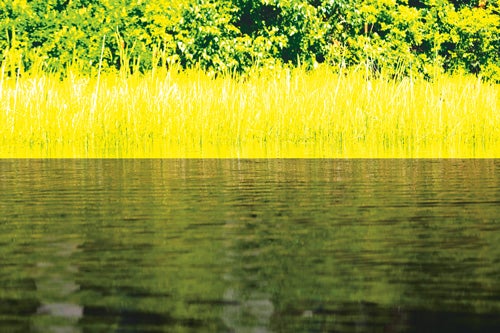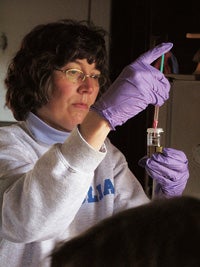Watching After Our Watersheds

Each week from May to October, 350 Rhode Islanders get out their thermometers and other monitoring equipment to test the health of hundreds of lakes, rivers, ponds, streams, and beaches throughout the state.
 The volunteers, an integral part of the University’s Watershed Watch Program, monitor more than 250 different sites for water clarity and temperature. They also check algae concentrations and dissolved oxygen levels every two weeks. URI provides the equipment and the training.
The volunteers, an integral part of the University’s Watershed Watch Program, monitor more than 250 different sites for water clarity and temperature. They also check algae concentrations and dissolved oxygen levels every two weeks. URI provides the equipment and the training.
On scheduled dates volunteers collect water samples that are analyzed in the URI Watershed Watch labs. Not all volunteers test for the same things in the same way or in the same timeframe. Some test chloride levels to determine runoff of road salts; others, such as a surfing group, test the water for bacteria year-round. Some volunteers dangle a Secchi disk from their boats or canoes to determine water clarity; others wade into the water or collect samples from a dock.
Watershed watchers come from all age groups, occupations, and educational backgrounds. They include retirees, middle school and high school students, and parents and children. All share a passion for the environment and a desire to protect it.
The watershed program, part of URI’s Cooperative Extension Water Quality Program, began in 1988 with just 24 volunteers, according to Watershed Watch Director Linda Green ’75, M.S. ’83.
“Rhode Island has compiled one of the most extensive databases of water quality in the nation, thanks in large part to the volunteers,” says Elizabeth Herron ’88, M.A. ’04, program coordinator.
 Home
Home Browse
Browse Close
Close Events
Events Maps
Maps Email
Email Brightspace
Brightspace eCampus
eCampus


